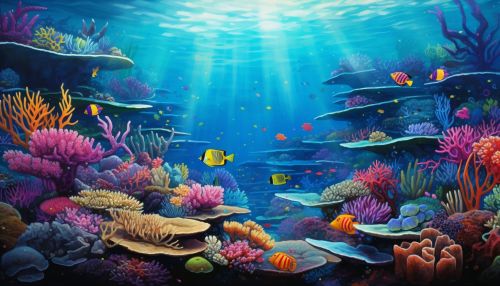The Dynamics of Ocean Acidification and Calcifying Organisms
Introduction
Ocean acidification is a significant environmental issue that is primarily caused by the uptake of carbon dioxide (CO2) from the atmosphere by the world's oceans. This process results in a decrease in pH, making the ocean more acidic. The dynamics of ocean acidification and its impact on calcifying organisms, such as coral reefs, shellfish, and certain types of plankton, are complex and multifaceted. This article will delve into these dynamics, providing a comprehensive and detailed exploration of the topic.


Ocean Acidification: An Overview
Ocean acidification is a direct consequence of increased atmospheric CO2, primarily from human activities such as burning fossil fuels and deforestation. When CO2 is absorbed by seawater, a series of chemical reactions occur, resulting in the increased concentration of hydrogen ions. This increase causes the seawater to become more acidic and causes carbonate ions to be relatively less abundant. Carbonate ions are an essential component of calcium carbonate, which is a critical building block for the shells and skeletons of many marine organisms read more.
Impact on Calcifying Organisms
Coral Reefs
Coral reefs are among the most biologically diverse ecosystems on the planet. They are built by colonies of tiny animals called coral polyps, which secrete a hard skeleton of calcium carbonate. The decrease in carbonate ions due to ocean acidification makes it more difficult for coral polyps to produce their skeletons, a process known as calcification. This can lead to weaker coral structures and slower reef growth read more.
Shellfish
Shellfish, such as oysters, clams, and mussels, also rely on calcium carbonate to build their shells. As ocean acidification progresses, these organisms may find it increasingly difficult to maintain and grow their shells, which can impact their survival. Additionally, the larvae of these species are particularly vulnerable to the effects of acidification, which can affect the overall population dynamics of these species read more.
Plankton
Certain types of plankton, such as foraminifera and coccolithophores, produce calcium carbonate shells or plates. These tiny organisms form the base of many marine food webs and play a crucial role in the global carbon cycle. Ocean acidification can affect their ability to produce and maintain their shells, potentially disrupting marine ecosystems and the carbon cycle read more.
Mitigation and Adaptation Strategies
While reducing CO2 emissions is the most effective strategy for mitigating ocean acidification, other approaches can also be considered. These include enhancing the resilience of marine ecosystems, developing and implementing adaptation strategies for affected communities, and conducting further research to improve our understanding of ocean acidification and its impacts.
Conclusion
The dynamics of ocean acidification and its impacts on calcifying organisms are complex and still not fully understood. However, it is clear that this process poses a significant threat to many marine ecosystems and the services they provide. Continued research and action are needed to mitigate the impacts of ocean acidification and protect our oceans for future generations.
